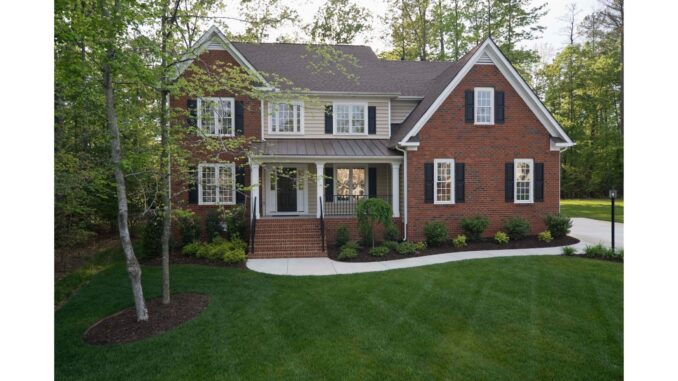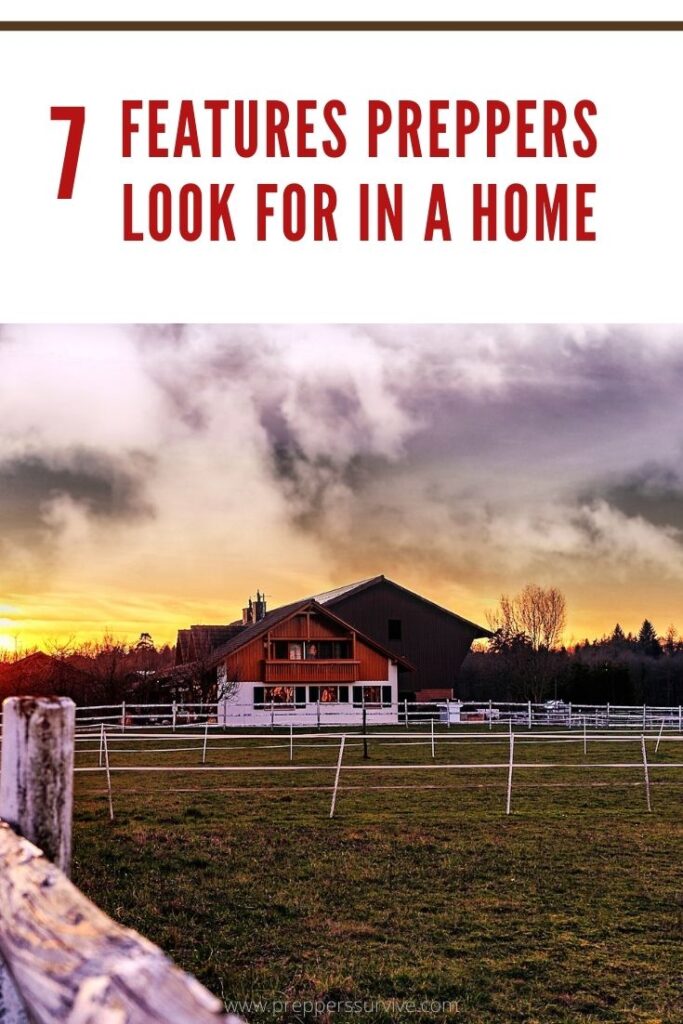
Do you ever wonder what features preppers look for in a home? Finding the perfect property to live off-grid or retreat when things go south takes a little time and know-how. In a perfect scenario, your ideal home would have all of the characteristics we’re about to share. Still, realistically, you’ll be hard-pressed to find the ideal property unless you’re scouting land and building on your own. Let’s take a look at some of the features preppers look for in a home.
7 Features Preppers Look for in a Home
Storage
If you’re the hunkering down and standing your ground kind of prepper, having a home emergency plan takes planning and room for necessary equipment. Storing food, weapons, and other essential supplies means you need a home that has space. Think about it – when things get bad, you won’t be running weekly trips to the store. It would be helpful to have a home with, preferably, dry space to store canned goods and other supplies and a climate-controlled storage area for storing grains and legumes.
Having ample storage space is critical for keeping your cache away from the eyes of visitors and family unless you feel comfortable sharing your plans with a close-knit group. It will be a dead giveaway to visitors if you have shelving lining all the free wall space in your home, packed with shelf-stable foods, water, and medical supplies. A ranch-style home is not likely to fit the bill when you need, at minimum, both an attic and a basement for storage.
Some essential features to look for in a home pertain to property details rather than the structure itself.
Location
When realtors stress the importance of location, location, location with a property, they’re typically referring to hotspots and sub/urban centers of activity. Schools, shopping centers, entertainment, and commuting distance are specific selling points for the average buyer’s homes. But when preppers talk about location, they’re referring to all of the details that make up a property.
If you want the potential of living off-grid, you’ll want to look for a natural resource nearby – a river, spring-fed pond, lake, or other naturally occurring water sources. Is the property wooded? What are the restrictions on the land? Can you have beehives and chickens? And finally, is the property secluded? Not everyone can live in rural areas, but the last home on a dead-end road is a good start.
Terrain
If you don’t have many options, the terrain will be straightforward in suburbia. But if you’re able to go a little further out in the country, you’ll want to consider the landscape surrounding your property. Living at the top of a mountain provides a great vantage point and likely lots of wood for fuel but leaves little in the way of manageable land to grow crops.
Stay away from properties on rocky, mountainous, or barely wooded plots. Remember, you’ll need wood and space to plant crops. If hunting is part of your plan, you want to choose a terrain that is preferable to the type of game you’re hunting, such as deer or turkey.
Water
Water is the key to survival, so this is a characteristic where you can’t make exceptions. Again, you want to make sure your home is near a natural water source. Well-water is your best bet here, as you’re not dependent on the grid for your water source. However, you can make it work with public water by investing in rain barrels and water storage containers. This, again, goes back to storage considerations, so be sure to factor that into the equation.
Soil & Land
While it may seem strange, you really do need to know what type of soil you’re dealing with before you get too far into the home buying process. There are six soil types – clay, sand, silt, chalk, peat, loam – and each type will need to be worked differently to grow crops. Do a soil test or at least identify the type of soil on the property to know what you’ll be working with if you buy.
Since we talked about soil, it makes sense to talk about land. If you’re planning on homesteading off-grid, then you’re likely looking for acreage when it comes to a property. The biggest thing to keep in mind is that 5-10 acres may sound like a lot, but if you’re throwing livestock into the mix, it isn’t as much as you think.
For example, five acres of land can sustain a family-sized garden and small to medium livestock, such as rabbits, chickens, ducks, and goats. Five acres, however, is not enough land to sustain your wood needs. A 10-acre property will give you enough garden space to feed your family and store or sell overage each season, and you should be able to sustain a cow or a couple of horses. An ideal size would be 25-acres or more to provide plenty of space for grazing, growing hay for livestock, a plentiful garden, room to hunt, and abundant wood for fuel.
Customize by buying as-is
While many preppers opt to build their homes on parcels of land, this blog post covers existing house and property features. Preppers aren’t afraid of hard work, so you may look for homeowners selling their homes as-is. As-is homes are typically lower in price because they’re fixer-uppers, and they often need a significant amount of work; the more work required, the lower the listing price. In this case, you can get a property at a discount and work to make it your own and equip it exactly how you want it.
Defensive landscaping
The final features preppers look for in a home is defensive landscaping. Defensive landscaping is when trees, shrubs, plants, yard lighting, and fences are used to make your home harder to break into and easier to protect from unwanted visitors (robbers or looters). The front of your home should be visible and look like your neighbors’ homes to keep you from being targeted. While you may be an NRA member, advertising this with a bumper sticker can be a literal advertisement for ‘weapons are stored here.’ The catastrophic result will be unwelcomed visitors at your doorstep.
Privacy fencing should be on your list of home features or the list of home improvements after you buy. This will allow you to utilize your backyard to store rain barrels, garden, and keep small livestock like chickens and rabbits, which can help protect your assets if things go south.
Thanks for visiting Preppers Survive. Before you leave subscribe to our newsletter. If you enjoyed this article, Features Preppers Look for in a Home, please share it on your favorite social media.



thanks;
great write up.
THIS “WHY” I moved out of SEATTLE,WA. it gown to hell ! SO I moved to EVANS,WA. just 29 miles from CANADA !